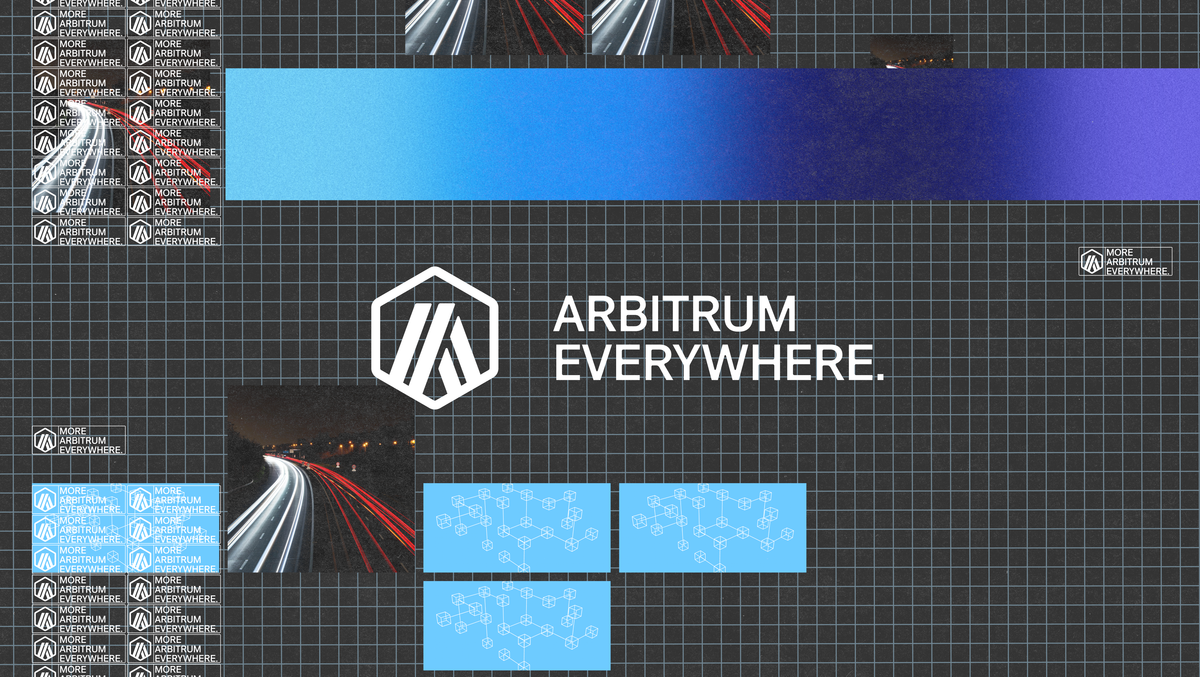Scaling Arbitrum Everywhere

Scaling has always been about performance. Faster speeds, higher throughput, and lower costs, but these metrics by themselves? Not enough. The actual goal is to build sustainable, open infrastructure that can stand the test of time. Think of it less like upgrading a part of your car to make it more fuel-efficient, and more like a collective effort to redesign the entire transportation system to one that’s more sustainable, effective, and accessible to everyone. A global system built to scale Arbitrum everywhere.
Here’s the thing that needs to be emphasized: scaling isn’t just a finish line that is crossed and forgotten about. Arbitrum will likely be talking about scaling years down the road. But for now, we’re going to share what is to come in the near future.
So, how does one go about all of this? Today, three key scaling pillars guide decision-making around scaling: Performance, Unification and Decentralization. These three pillars often pull against each other; it’s easy to move one forward if you’re willing to sacrifice the others. Luckily, this isn’t a zero-sum game. We’re not choosing between performance at the cost of decentralization, or vice versa - we’re building a future where you don’t have to make that trade at all. Real scaling means refusing the easy path and pushing these scaling pillars forward at the same time, even when they naturally pull in opposite directions.
There are three core pillars that we focus on when it comes to scaling, and our goal is to continue to make progress on each of them without compromising on one of the others to do so. This post will set the stage for more focused deep dives to come over the coming weeks into the steps we're taking to scale along each of these dimensions
Performance
The long-term target for performance is to increase the throughput of Arbitrum applications by 100x. This will allow any application building on Arbitrum to handle larger volumes and become dramatically more performant and capable.
As systems evolve, so does the relationship between usage performance and costs. Ultimately, the goal is to increase activity, opportunities, use cases, etc, at a lower price without compromising fundamental blockchain values.
Unification
As new apps and use cases emerge in the ecosystem, users should not need to consider which chain to use. Interacting across chains, whether on Arbitrum One, Nova, other Arbitrum chains, or even a chain from another ecosystem, must feel seamless, fast, and intuitive. The purpose is to build a world where interacting across its ecosystems feels like a continuous experience.
Many unification goals have been previously outlined in Offchain Lab’s interoperability roadmap, which include:
- Introducing intent-based interoperability that will enable cross-chain swaps in under three seconds.
- Enabling trustless bridging between L1s, L2s and L3s, minimizing user risk.
- Standardizing messaging and establishing compatibility with various EVM standards
- Utilizing core VM changes like EIP-7702 and account abstraction to simplify crosschain actions into a single, intuitive signature flow.
- With Fast Withdrawals already in use, adopting additional settlement solutions such as native ZK integration can lower latency and user costs.
Decentralization
Decentralization lies at the core of blockchain technology. Broad access to ecosystem participation is critical regardless of geography or hardware access. The infrastructure that powers Arbitrum should always remain open, resilient, and trustless at scale.
Builders using Arbitrum technology should be able to tune deployments to fit their needs, configure their chain to find the right balance between costs and performance, and cater to their communities and infrastructure partners.
Building Towards Scaling Goals
Now that the scaling pillars have been laid out, an important question remains: How will this be achieved? Over the coming weeks, we’ll explore some of the significant initiatives that have helped Arbitrum move the needle forward across these three scaling pillars.
Below are some key areas to expect.
Alternative Clients
Arbitrum currently runs on Nitro, built on top of Geth, the battle-tested and trusted Ethereum client. But now, the ecosystem is ready to diversify.
Implementing alternative clients will enable:
- Greater fault tolerance.
- Optimized and tailored rollup environments, improving performance and flexibility.
- More decentralized operations.
Work here is already underway, and teams will share updates as new clients are developed and tested.
Dynamic Pricing
If approved by the Arbitrum DAO, dynamic pricing is another solution to enhance performance without compromising decentralization and unification.
Today, every transaction competes for blockspace in the same way, no matter the transaction. With dynamic pricing, different resource types will be priced independently, significantly reducing congestion and better reflecting actual usage of Arbitrum.
Research and engineering for dynamic pricing is still in its early stages, but additional information will be shared in the coming weeks.
Scaling for the Long-Term
Performance, user experience, and decentralization have always been the foundations of scaling, and these scaling pillars will continue to guide the Arbitrum ecosystem as it grows and evolves.
What’s been outlined here is only the surface layer. This is the first chapter in a much larger scaling story. A lot is happening behind the scenes, and more details on specific strategies and technical decisions will be revealed.
From dynamic pricing mechanics to alt client implementations, Arbitrum will share these updates as they come, so keep an eye out and stay tuned.

